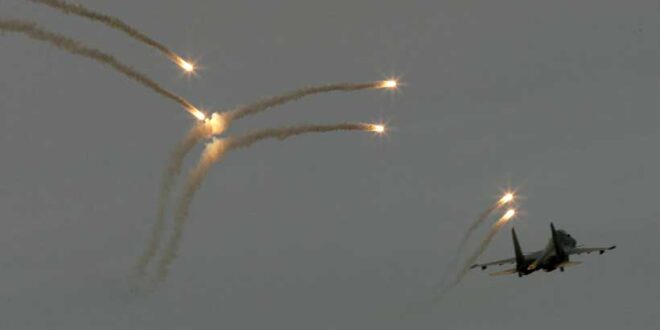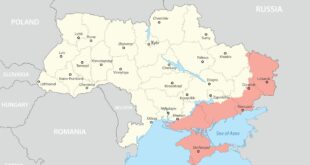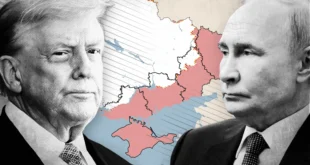In the multipolar era, every war serves as a flashpoint through which the evolving balance of power is tested and contested. The recent escalation between India and Pakistan in South Asia, and Israel and Iran in the Middle East, reveals the realist underpinnings of conflicts – particularly in a world where no conflict can be resolved unilaterally by a single power. These case studies demonstrate crisis diplomacy in action, though employed only after the conflicts had broken out into limited wars with conventional military engagement. The international community’s response was delayed in both instances as great powers calibrated their mediation efforts based on strategic interests, competing narratives, risk of nuclear escalation and regional alignments. Understanding the mediation efforts by the United States, China, and the Gulf States in each context is imperative to decode crisis diplomacy – a tool employed to serve strategic interests to protect the global order rather than a normative imperative to de-escalate conflicts.
The case of India and Pakistan’s recent four day war provides critical lessons for decoding crisis diplomacy by international actors. It began with attacks on tourists in the Pahalgam valley of Kashmir on 22 April, killing 26 people, which spiraled into what can be termed as the deadliest military confrontation between two nuclear armed states. This incident redefined security dilemma in terms of narrative building as Indian threat perception of Pakistan supporting terrorism led them to initiate the first military strike. Pakistan responded by denying any involvement and showed willingness to jointlyinvestigate this incident.
However, India pulled various diplomatic pressure tactics including the abeyance of the Indus Water Treaty (1960), which provides for 80% of Pakistan’s water supply. Feeling threatened by this move, Pakistan termed this as an ‘act of war’. It became a security dilemma for both sides as war broke out on May 7th, 2025 with conventional military strikes by India targeting supposed terrorist camps in the civilian heartland of Pakistan. This conflict kept climbing the escalation ladder as Pakistan’s retaliatory posture signaled serious regional fallout, including nuclear risks, which led great powers especially the United States, to diplomatically resolve it.
The Iran-Israel confrontation centered on the nuclear question which became the security dilemma for Israel. The narrative about Iran’s nuclear program and supposed weaponization prompted Israel to launch attacks on three of Iran’s nuclear sites – Natanz, Fordow, and Isfahan on June 13th, 2025. It killed dozens of the top scientists and military leaders involved in the Iranian nuclear program. A direct military standoff between the two erupted where Iran and Israel bombarded each other with hundreds of missiles, lasting for 12 days. America’s stance on the conflict initially supported Israel going as far as to provide military assistance and even striking nuclear targets in Iran with more force on the behest of Israel. Iran’s retaliation shifted towards American bases in Qatar where it targeted the Al-Udeid air base.
Despite warnings from the U.S stressing the need for diplomacy, Iran did not let any attack on its sovereignty go unanswered, according to the Iranian Revolutionary Guards Corps (IRGC). Along with the military action, Iran also threatened to close the Strait of Hormuz, an important global chokepoint which accounts for 20% of the world’s oil flows. These actions prompted a sudden need for crisis diplomacy as the war kept ascending the escalation ladder with the threat of a nuclear fallout. President Trump announced the ceasefire right after the Iranian response. While other powers such as China, Russia, and the Gulf States were involved in back door diplomacy, the risk of military involvement and potential spillover became too high.
Conflicts that continue to escalate without any bilateral negotiation in sight require international mediation. However, this mediation is laced with strategic interests rather than a normative approach. It can be gathered by analyzing the response of the international community to the South Asian and Middle Eastern wars. The process of diplomatic mediation is built around certain structural drivers that international actors pursue in order to chart a pathway towards conflict resolution. Some of these factors include the nature of the conflict, its linkages with the geopolitical and geoeconomic effects on the international system, and the relations between the mediator and the parties in dispute.
The nature of India-Pakistan conflict is shaped by the risk of nuclear escalation that threatens the regional stability whereas this dynamic is somewhat similarly evident in the Iran-Israel war, as these states have not yet reached the declared nuclear deterrence as seen in South Asia. Their conflict is increasingly framed by nuclear threat perceptions, and strategic ambiguity – making it a latent nuclear crisis. Furthermore, geo-economics also drive great power interests – the case of South Asia where China’s Belt and Road initiative, America’s interest in counterterrorism and energy security, and the Gulf states’ labor force driven from the Asian diaspora prompts their efforts to prevent war. The Middle Eastern region holds key geo-economic interests for major powers – the Strait of Hormuz being the central driver.
Alliance management is another structural driver that involves the relation between the disputant parties and international actors which requires a delicate game of balancing power projection. In case of the India and Pakistan, historically, the United States has remained a major mediator. However, a shift in the American policy was observed with the onset of Trump’s term which included a more isolationist approach. His initial statements on the war reflected this stance. The remarks by the U.S Vice President JD Vance were similar as he claimed in an interview that “America can’t tell the Indians to lay down their arms. We can’t tell the Pakistanis to lay down their arms.”
It clearly indicates that American interests in the region were untouched. It was also due to the nature of the conflict which supported India’s stronger narrative reflected in its media as well as its military strikes that prompted Washington to support India in its quest for countering terrorism. However, the shift in the balance of power came with Pakistan’s retaliation on May 10th, 2025. Almost after 12 hours since Pakistan’s retaliation, Trump declared a cessation of hostilities. Pakistan’s retaliation sparked a spike in the escalation levels touching the nuclear threshold which breached American alliance commitments and urged them to implement crisis diplomacy for resolution.
The Middle Eastern war presents a similar scenario as American commitments favored Israel. The diplomatic talks with Iran revisiting the nuclear deal encouraged Iran to ‘limit’ its nuclear program, with some American senior officials pushing for ‘complete dismantlement’. Israel’s security dilemma got ignited by Iran’s uranium enrichment up to 60% which led them to pressurize the American government to take a hard-liner towards Iran. Israel decided to take matters into its own hands when it attackedIran’s nuclear sites, forcing a direct military standoff in the region. American position, in this regard, favored Israel as they provided them with air defense and munitions against Iranian attacks. Iran has regional support from Pakistan, China, and Russia, however, their hesitance for direct involvement in a war against the U.S indicates the alliance balancing in precarious situations.
The Iran-Israel war escalated without any feasible diplomatic mediation in sight. The United States, despite being deterred from joining the war, intervened when it struck Iran’s nuclear sites with more force using advanced B2 bombers along with ‘75 precision-guided weapons’. This realist strategy of using force to deter the opponent failed as Iran responded by attacking the largest U.S air base in the Middle East. With the U.S intervening in the war militarily, this might open up possibilities for other great powers such as Russia or China to indirectly intervene in the conflict supporting Iran. Eventually, when the stakes increased, American interests shifted towards adopting a diplomatic approach by announcing a ceasefire. The fear of spillover effects of war in other regions along with another costly engagement for the U.S was against its interests that paved way for a successful diplomatic intervention.
Conflicts are driven by a security dilemma faced by the aggressor state that pushes for military escalation as the only solution. In such cases, crisis diplomacy is a vital tool for conflict resolution. However, it can only be initiated by global powers willing to de-escalate a conflict. In the recent short term wars, diplomatic intervention was aided and abetted by global powers only when their interests were challenged. The normative dimensions of mediating for maintaining peace is a fallacy in international relations as the world is driven by interests rather than ideals. In case of South Asia and the Middle East, preventing a nuclear catastrophe was one of the major interests that had driven great powers towards a strong mediation. The costs of war are too high for both sides but with the consequences having significant impacts on the global order, major powers are compelled to mediate and eventually bring about a ceasefire.
 Geostrategic Media Political Commentary, Analysis, Security, Defense
Geostrategic Media Political Commentary, Analysis, Security, Defense





